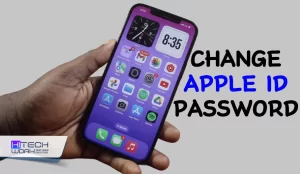Are you looking for ways to improve your Mobile App performance? Then, you have come to the right place. We will let you know some tips that will help boost your app performance.
As we all know, mobile apps are the best way to build an audience and convert users. When it comes down to developing a mobile app, it’s easy to fall into the trap of focusing solely on user experience, design, and app promotion. But the customers don’t return to your app due to the performance of the mobile app. So, for better performance, you will need the right tool of mobile application development company to monitor the stability and performance that will help you boost your mobile app performance & will also let you gather the details to see how changes are functioning and level up the app quality in reaching to the potential customers.
However, Google Play features around 3.48 while Apple Store has 2.22 million available apps. With so much market competition, you must ensure that your app is fully optimized for success. So now, we will deep dive into enhancing the mobile app’s performance, why it is important, & how you can optimize it.
Table of Contents
Why is Mobile App Performance Essential?
Mobile performance refers to how efficiently an app runs on smartphones under huge loads and circumstances. Hence, as the world is moving ever more digital, people expect apps to run more smoothly and proficiently when they don’t. Most uninstalled apps are down to app crashes, because most users ditch the apps that take too long to load. Performance issues are the main killers of apps. If your users leave your app unhappy, you have lost them.
Mobile app performance optimization is necessary as the world continues to become more connected, the convenience that modern technology has provided customers to interact with organizations and businesses via apps paves the way for demanding improved, competent app performance. Hence, slow and unresponsive apps lead to disturbance, discontent, and negative reviews that impact companies’ images. That’s why app performance is a serious concern, which should be resolved instantly.
Some Useful Tips to Improve Mobile App Performance

It’s no secret that mobile apps have been taking up huge shares of global online traffic due to their ever-rising popularity. So it is necessary to meet the user’s expectations and demands for high quality. So here we will let you know some tips that will help you provide a great user experience. Now let’s have a look at improving the app performance.
1. Reduce the App’s Size
The size of the app plays an important role in downloads as well as user experience. The study says that app downloads decrease by 1% for every 6 MB raise in size. Mobile phones don’t yet have strong GPUs. Furthermore, most of the mobile phone market share contains low-end devices, and some of them don’t even support 3G.
Installing a giant app would be a nightmare for low-end mobile users. Therefore, the lesser your app takes space on your phone, the better. There are various ways to minimize the app size and boot mobile performance such as using image compression, avoiding unnecessary features, app bundles, and so on.
2. Optimize Pictures
Images are a vital part of a mobile app. They must be of high quality. If the image size is large, the slower it will load, and it causes your app to function slowly. To improve it, the three basic terms resizing, compressing, and catching will be your go-to policies for handling them.
Compression is the process of encoding digital picture detail using fewer bits. It significantly pulls down the file size of the image in question, with no decline in resolution and often slight quality loss. All pictures used on mobile apps must be compressed in some way. It makes sure the load time is kept minimum.
Resizing images requires changing the resolution of the image in question. Images formatted for print, for example, are frequently times larger than they need for display. As a result, resizing images for mobile screen dimensions can help you save kilobytes.
Caching is the practice of downloading pictures from a network into the device’s memory. Once on the device itself, the app won’t need to load it from the other network every time it is displayed. Despite it being able to draw on its own internal memory, it is a much quicker and more economical option that will positively affect load time. However, these optimizing tips decrease the effort the mobile app has to put into load assets. The result is quicker load times and an efficient experience for the user.
3. Test Your App across Several Devices
Proper app testing is important for checking it works as designed, but you have to remember that not everyone will use your app in the same way or on the same devices. So that’s why it’s essential to test the app on multiple devices.
Device testing guarantees your final product will perform as designed no matter which device you are using; it will give you an idea of your app’s performance over various battery lives and technologies, checking your user experience is kept consistent across various circumstances. Although, testing on several devices is a great way to detect the small issues before they grow. In any case, if your app is consuming the battery of a specific device much faster than others, you should be able to identify how & why it’s behaving in such a way and solve it before it affects other devices.
4. Prioritize Your Content to improve the Mobile App Performance
To ignore glitches in mobile apps, you have to prioritize the content you wish to show on your app. mobile apps with vast content may take time to load. To avoid the long loading time, you must prioritize the content.
5. Create an Offline Mode
There is a high risk of user network connectivity dropping while using your app. To ensure the retention of the user, you must be aware them that their network has connectivity issues and must provide them the option to save the data so they can restore their activity on the app whenever the internet resumes. Without the offline mode, if a sudden connection issue occurs, all the data being used by the app is removed.
6. Load Data as You need it
Loading all of an app’s data at once, on the other hand, is an instant way to slow or even crash it. Instead of processing, large amounts of data at once, Instead of processing large amounts of data all at once; consider using split-up assemblies to break the data down into easily retrievable portions. It means you can prioritize the app’s most significant functions first, leaving the less important operations to load as needed.
7. Network Performance
Mobile apps must be checked for working on networks such as mobile, Wifi, 4G, and so on. Measuring network properties assist you in informing where & when a mobile app can most effectively be used. Ideally, your app will be usable from anywhere there is a connection to a network to the best of its capabilities.
- Network speed– networks come in various speeds; checking to make sure that the mobile app will work smoothly across all devices guarantees permanent usability for the consumer. However, problems arising from various networks should also be tackled before they can damage an app’s experience.
- Packet Loss- For the average user, losing information is a pain in the neck. If your app does not happen to have an entire packet loss, it should offer options to attempt to regain that lost information. Apps should resend for info after packet loss or otherwise provide instant warning or prompts for the user to attempt packet loss recovery.
- Server/API Performance- responsiveness while interacting with servers is crucial to a mobile app’s allure. Your app must be able to communicate with the server for optimum performance quickly.
Final Words
The best aspects to boost the mobile app’s performance are functionality, reliability, and ease of use for the consumer. Hence, the app should be fast, comprehensive, and concerned only with the relevant information. This blog has covered the important aspects that will improve mobile app performance, and we suggest you use the mobile application development services for better performance. However, the only way to retain your users is to make your mobile app deliver the greatest performance.












